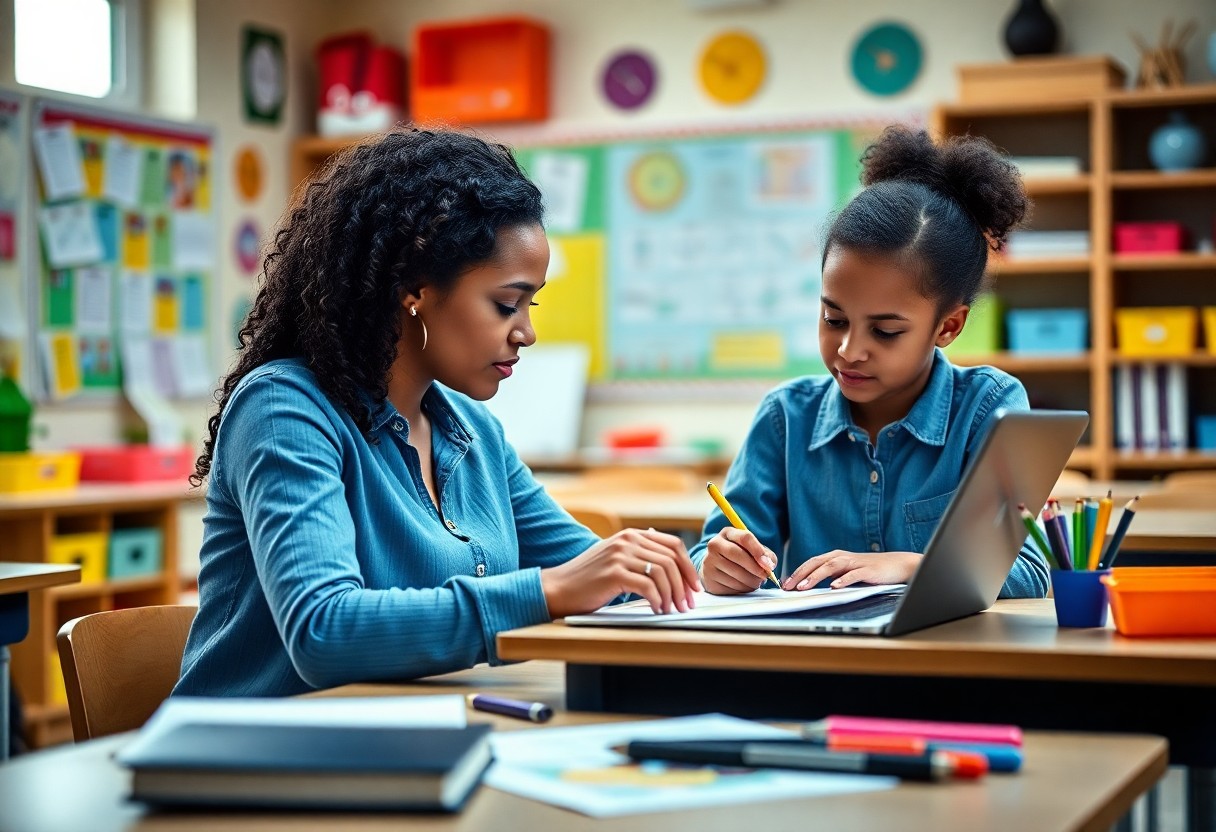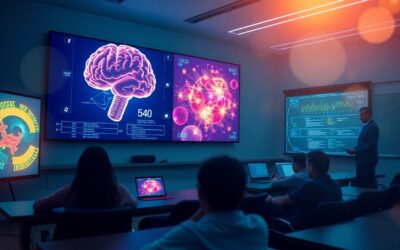You have the power to tailor your child’s education to fit their unique needs and interests, fostering a more engaging and effective learning experience. By understanding your child’s strengths, preferences, and learning style, you can create an environment that encourages growth and curiosity. In this guide, you will discover practical strategies to adapt educational content and methods, ensuring that your child thrives academically and personally.
Understanding Your Child’s Learning Style
The key to personalizing your child’s education lies in understanding their unique learning style. By recognizing how your child processes information, you can create an effective and engaging learning environment tailored to their needs. This understanding will allow you to support their education in a way that maximizes their strengths and addresses any challenges they may face.
Identifying Learning Preferences
Some children learn best through visual aids, while others may prefer auditory instructions or hands-on activities. Observing your child’s behaviors during different learning experiences can provide valuable insights into their preferred learning methods. Asking them about their preferences can also encourage a dialogue that emphasizes their active participation in the learning process.
Adapting Teaching Techniques
Style is vital when it comes to adapting your teaching techniques to suit your child’s learning preferences. Tailoring your approach can enhance their comprehension and retention of information, fostering a more enjoyable educational experience.
With a clear understanding of your child’s learning style, you can introduce various teaching techniques that resonate with them. For example, if your child is a visual learner, incorporate charts, videos, and colorful illustrations into their lessons. For auditory learners, consider using discussions, songs, or podcasts. Kinesthetic learners will benefit from hands-on activities, allowing them to engage physically with the material. By diversifying your teaching methods, you can create a richer learning experience that caters to your child’s specific needs and keeps them motivated.

Setting Personal Goals
Even in education, personal goals play an important role in fostering your child’s growth and engagement. By helping them identify what they want to achieve, you empower them to take ownership of their learning journey, making it more meaningful and relevant to their interests.
Collaborating with Your Child
Some of the most effective goal-setting occurs when you involve your child in the process. By discussing their passions and aspirations, you can help them articulate their educational goals, fostering a sense of partnership that encourages motivation and accountability.
Establishing Achievable Milestones
You can break down larger goals into smaller, manageable milestones, making the journey interactive and motivating. This strategy not only helps your child stay focused but also provides opportunities for celebration as they progress towards their ultimate goal.
Plus, establishing achievable milestones allows for regular assessments of progress. As your child reaches each milestone, provide constructive feedback and celebrate their achievements to boost their confidence. This approach will encourage perseverance and help them stay committed to their educational path, while also allowing adjustments if necessary to keep them on track towards their personal goals.
Creating a Tailored Curriculum
There’s no one-size-fits-all when it comes to your child’s education. By developing a tailored curriculum, you can ensure that your child is engaged, motivated, and learning at their own pace. Assess your child’s strengths, weaknesses, and unique learning style to create a personalized learning experience that can adapt as they grow. This approach enables your child to thrive academically and develop a genuine love for learning.
Incorporating Interests and Hobbies
You can enrich your child’s curriculum by incorporating their interests and hobbies. Whether it’s art, sports, or technology, integrating these elements into their learning can enhance their motivation and retention of knowledge. By allowing your child to explore subjects that resonate with them personally, you foster a sense of ownership over their education, making learning more enjoyable and relevant.
Flexibility in Subject Choices
While it’s crucial for your child to meet certain educational standards, allowing flexibility in subject choices can significantly boost their engagement. You can provide them with the opportunity to explore various subjects, enabling them to discover their passions and strengths in a way that a rigid curriculum may not allow.
The flexibility in subject choices empowers your child to investigate deeper into areas that fascinate them and promotes self-directed learning. For example, if your child shows a keen interest in nature, you could incorporate science projects related to biology or environmental studies. This approach not only satisfies curriculum requirements but also nurtures their individual interests, making learning an exciting and fulfilling journey.
Utilizing Educational Resources
Many parents overlook the wealth of educational resources available to enhance their child’s learning experience. By leveraging online platforms, local libraries, and community centers, you can tailor your child’s education to suit their unique needs and interests. Consider exploring various materials, interactive tools, and extracurricular programs that can complement your child’s learning style and promote their academic growth.
Recommended Tools and Technologies
While there is an abundance of educational tools available today, it’s crucial to choose those that align with your child’s learning preferences. From engaging apps that foster creativity to comprehensive online courses targeting specific subjects, selecting the right technology can motivate your child and enhance their critical thinking skills.
Finding Support through Communities
There’s an invaluable resource in connecting with communities that share your educational goals. Engaging with other parents, educators, and professionals enables you to exchange ideas, share experiences, and discover resources that can further personalize your child’s education.
With the rise of social media and online platforms, finding support through communities has never been easier. You can join local groups or participate in forums that focus on personalized education. These networks offer the opportunity to ask questions, seek recommendations for resources, and gain insights from others navigating similar challenges. Connecting with supportive communities allows you to access a wealth of information and foster a strong network that benefits both you and your child.
Strategies for Effective Communication
Keep communication lines open with your child to foster a trusting relationship. This means actively listening to their thoughts and feelings while also expressing your own ideas. By creating an atmosphere where dialogue is welcomed, you empower your child to share their concerns, preferences, and aspirations, ultimately leading to a more tailored educational experience.
Engaging in Open Discussions
The key to personalizing your child’s education is engaging in open discussions. Regularly converse about their interests, challenges, and educational goals. This not only helps you understand their unique learning style but also allows you to collaborate on finding solutions or exploring new subjects together, making education more relevant and enjoyable.
Encouraging Feedback and Reflection
While facilitating a supportive environment, it’s important to encourage feedback and reflection. Invite your child to express their thoughts about their learning experiences, classroom dynamics, and any activities they find engaging or frustrating. This active reflection can guide you in adjusting their educational approach to better suit their evolving needs.
Effective feedback and reflection can significantly enhance your child’s learning journey. By setting aside time for discussions on what they’ve learned and how they feel about their education, you can gain insights into their preferences and dislikes. This continuous dialogue allows you to make informed adjustments to their learning plan, ensuring it stays aligned with their interests and developmental needs. Moreover, when children see their feedback valued, it fosters self-awareness and motivates them to take ownership of their education.
Monitoring Progress
Not all educational approaches yield the same results for every child. To effectively personalize your child’s education, you must regularly assess their progress. This includes tracking academic achievements, areas needing improvement, and overall engagement levels. Ongoing monitoring allows you to identify patterns and adapt your strategies for optimal support.
Regular Evaluations
If you want to understand your child’s learning trajectory, implementing regular evaluations is necessary. These assessments can come in various forms, such as quizzes, projects, or informal check-ins. By routinely checking their understanding, you will gain valuable insights into their strengths and areas where they may struggle.
Adjusting Strategies as Needed
Little adjustments can make a significant difference in your child’s educational experience. As you find out how they respond to different approaches, consider making tweaks to their learning plan. This could mean incorporating new resources, changing the pace of lessons, or providing alternative methods of engagement.
A personalized education plan thrives on flexibility. By evaluating your child’s progress and being open to adjustments, you create a learning environment that can adapt to their evolving needs. This may involve actively seeking feedback from your child about what works for them and being willing to replace ineffective strategies with new ones. The goal is to provide support that aligns with their unique learning style and facilitates growth.
Summing up
From above, personalising education for your child involves understanding their unique learning style, interests, and strengths. You can adapt their study environment, incorporate relevant resources, and set attainable goals that cater to their individual needs. Regularly communicate with your child to assess their progress and adjust your approach as necessary. Foster a supportive atmosphere that encourages curiosity and resilience, ensuring that their educational experience is both enriching and engaging.
FAQ
Q: How can I assess my child’s learning style?
A: Assessing your child’s learning style can involve observing how they approach tasks and what activities they enjoy most. Consider using questionnaires designed to identify learning styles, such as visual, auditory, or kinesthetic. Additionally, you can experiment with different teaching methods, like hands-on projects, reading assignments, or interactive discussions, to see which ones resonate best with your child. Engaging in open conversations about their preferences can also provide insights into their ideal learning environment.
Q: What are some effective ways to set personalized learning goals for my child?
A: To set personalized learning goals for your child, start by discussing their interests and aspirations. Collaboratively identify specific, actionable goals that align with their strengths and areas for improvement. Make sure the goals are measurable, achievable, and relevant to their current level of understanding. Regularly check in to evaluate progress, and adjust the goals as needed to keep your child motivated and engaged. By including them in the goal-setting process, you empower them to take ownership of their learning journey.
Q: How can I incorporate my child’s interests into their education?
A: Incorporating your child’s interests into their education can make learning more enjoyable and relevant. Start by identifying what subjects or activities excite them. Use these interests as themes for projects or research assignments. For example, if your child enjoys dinosaurs, explore related topics in history or science. Encourage them to read books or watch documentaries aligned with their passions. Additionally, consider extracurricular activities, such as clubs or classes, that match their interests, allowing them to explore and expand their knowledge in an engaging way.




0 Comments